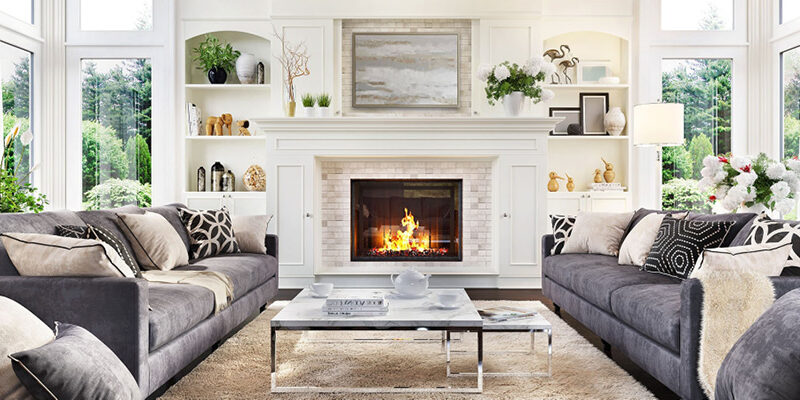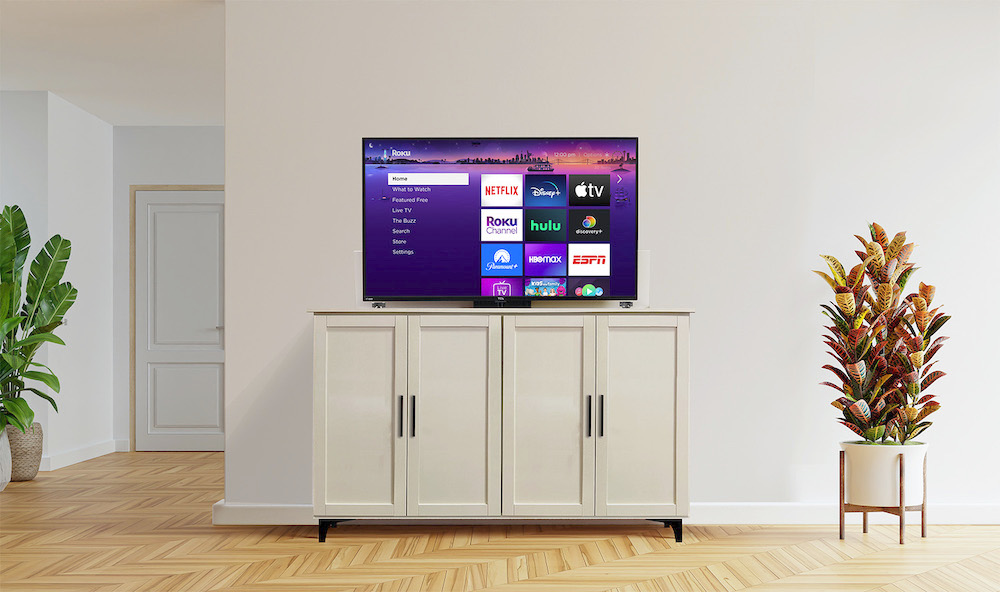Design: Striking Balance
Living room design, and all design, really, is walking a fine line between the extremes of “Pinterest perfect” and “real people use this space everyday.” You want that perfectly designed room, but you want to feel like it serves you well in functionality, too. Just as it should. No one is suggesting we design homes that function like museums—look, don’t touch; stand, don’t sit, and make your life fit in with the pretty furniture. Of course not! At the same time, no one is saying we should create purely utilitarian, uninteresting spaces. Beauty in your living space has a real effect on your life and you should create lovely, inspired spaces you enjoy looking at day after day. But how do you strike that perfect balance? How do you create this in reality? As often happens, being stuck in the crosshairs of a problem like this is a wonderful opportunity for creative solutions. These constraints are more like guides to creating a design that looks good as it’s working for you, rather than “instead of.” Now, where do you start? Try using these tried and true tips that are sure to carry you through the process.
Ask yourself a few questions.
How is this space used? How would I like it to be used? What do I want this space to say? How do I want it to feel? When you’ve decided on your values and priorities and remain focused, you’ll find questions answering themselves as you work. A formal living room will evoke very different responses than a family room or a dedicated movie room. For example, in a main family living space smack dab in the home’s center, it’s likely used every single day for relaxing, gathering, entertainment, homework, etc. You may also want the space to lend itself well to forging connections as a family through lots of good conversation. At the same time, if it’s central in the home you’d like it to look put together, stylized and tasteful. If it’s more of a theater room, you mainly want it to be cozy and comfortable and to have lots of seating.
Carefully consider your layout.
Would you like this design to invoke more quiet relaxation or more easy conversation? How much seating, what groupings of seats, and what do the seats have in their sight lines? Depending on your answers, you may select a huge sectional with ottomans and chaises. Or maybe two sofas that face each other with accent chairs that can be poised nearby. Or you might want a designated solitary relaxing area, like a single chair and side table tucked into a corner, perfect for reading.
Select furniture and decor with your goals in mind.
If it’s a heavily used family room, steer toward comfortable, durable, and stylish couches, interesting, personal, and not-too-precious decor. Err on the side of minimalism knowing the room will rarely be empty. Comfort and practicality are the priority here. If it’s a formal living room reserved for visitors you’re designing, let your style shine with lots of interesting textiles and plenty of beloved art. This is your chance to curate a personal museum that won’t often be disturbed and won’t constantly be getting spilled on.
Lighting is everything.
Nothing sets a tone or a mood more than lighting. A good rule of thumb is to have a minimum of 2-3 sources of light per space, and no one will complain if you have more. Use the lighting to help you achieve your goals by setting your “scenes.” If you’d like it to be well-lit at homework time, opt for a few more overhead lights like a central feature plus a few pin lights. If you want excellent ambient, moody lighting for movie night, be sure you have some dimmable wall sconces. And it never hurts to throw in a few table lamps for good measure, which are great for designating a cozy conservation area or reading nook.
Take your time.
Take as much time as you need in settling on and executing your design. Take note of what your family is and isn’t using the space for. Pay attention to the types of messes being made. Focus on the times you’ve most enjoyed in the room. Over time, the optimum design will likely become clear in the problems you’re trying to solve and the moments you’re trying to create. Avoid the tendency to push forward in order to be “finished.” It’s better to be slow and intentional than to be done as quickly as possible, and if you carefully create a space you really love, you’re less likely to find yourself wanting a change in a year.
Bonus: What to do about the tv.
The default for many people designing family spaces is to orient the room around the tv. And if that aligns with the goals you have for the space, then perfect! On the other hand, high design would call for eliminating the tv altogether (like on any reality tv design show, rather unrealistically). It’s true that it really isn’t the most aesthetically pleasing item, but it’s also true that most people watch tv regularly. Luckily, there is a third option that gets you the best of both worlds, which is what most people want—a tv friendly place as well as a living room that still emphasizes and encourages the “living” rather than just the tv watching. If this is what you’d like to aim for there are a few tricks that may help:
- Try orienting your space in a way that allows for more good old fashioned eye contact. Maybe couches that face each other. Or maybe a big sectional with accent chairs just opposite. Or maybe a space that is arranged informally into two sections: a conversation “area” and a tv area. Not every seat needs to be facing another, but many should. Avoid the set up in which no seat faces another, like a great big sectional that faces nothing but the tv.
- Try having a tv that is readily accessible, but not the main feature. A well-designing tv lift cabinet is a prime choice here—the tv can be right in the center of things, but only when it’s actively designated as such. When you haven’t opted to watch tv, it’s beautifully hidden away like furniture. You could try placing it off center in the main wall or on an adjacent wall, with art or decor items as the room’s focus point instead—like if your fireplace is central with a meaningful piece of artwork above the mantel and the tv is tucked into the cabinet on one side or the other. Keep in mind that you’ll want most seats in the room to be able to see the tv rather comfortably, but if a few can’t, that’s okay. Just don’t point your largest sofa, for instance, away from the tv while only a couple of accent chairs face it.
With this set up, someone entering the room won’t immediately see the space as a “tv room.” You can still host a killer movie night in the space, but you can also drop into a chair and easily have a conversation with a loved one. In fact, when you set it up this way, you might be surprised to find that you use the tv a little more intentionally and that more conversing, playing games, or relaxing with a book fills the void naturally.
Hopefully this guide helps you move forward in creating a living room that feels intentional and personal while still fitting your aesthetic and pleasing your eye. Most people want a lovely and functional space but don’t know how to get that balance without the help of a professional. As long as you revolve your decisions around your goals, you can create a space that perfectly balances form and function and it likely won’t be such a daunting task, even for a design novice.





